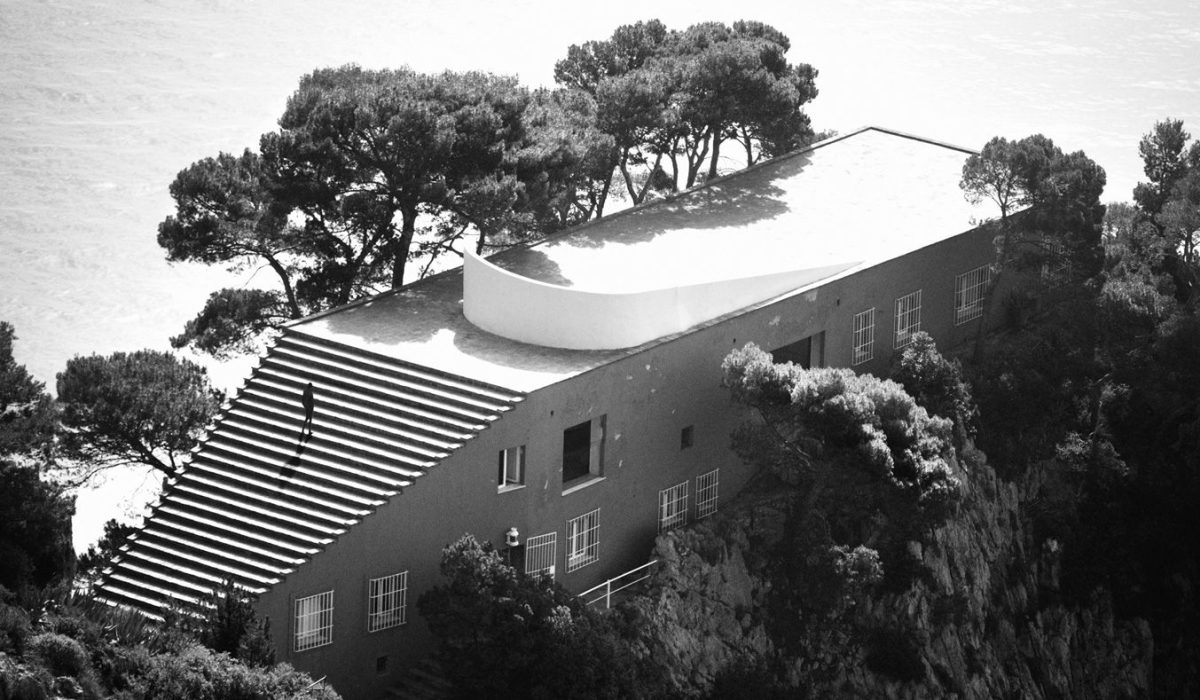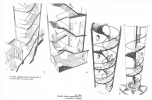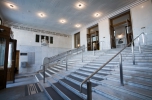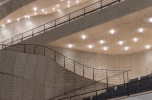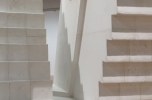Stair-Cases
Text: Ákos Moravánszky
Architecture starts with the making of a horizontal plane. The archetypical ancient hut was the next step, having a fireplace on this horizontal surface as well as defending, covering and surrounding it. According to Gottfried Semper German architect and theoretician the terrace shovelled on the ground from the soil was the foundation for the altar, as it was elevated from its natural surroundings. Semper has identified the primitive form of the ancient hut which already contained all the four basic elements – the terrace, the roof, the walls and the fireplace as well – in a Caribbean fisherman’s hut made of bamboo on display at the London World Exhibition in 1851. Here the horizontal plane is not a mound of earth evenly pressed down: above it still there is a floor woven between bamboo poles fixed on the frame structure. It is a natural idea that the floor can be repeated above, and thus the frame can be layered. In one of his lectures, Alvar Aalto mentioned that in Dante’s Divina Commedia the most frightening means of torture in Hell is the badly proportioned staircase. Ho seriously he had taken this is proven by his buildings. The stairs was a convincing example and proof for him of the fact that the construction of a harmonious world starts with the right solution of such tiny details, and that form cannot be exclusively and purely a subjective decision made by the designer himself.
